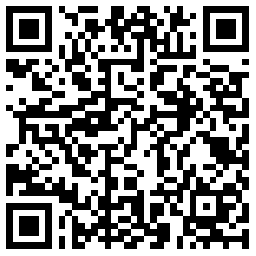Interpretation on Chinese Guidelines for the Diagnosis and Treatment of Childhood-onset Systemic Lupus Erythematosus
-
摘要: 鉴于儿童系统性红斑狼疮的诊断和治疗较成人更具复杂性, 2021年中华医学会儿科学分会免疫学组联合指南方法学专家及《中华儿科杂志》编辑部制定了我国首部《中国儿童系统性红斑狼疮诊断与治疗指南》。该指南是对2011年我国《儿童系统性红斑狼疮诊疗建议》的延续, 依据循证实践, 结合中国具体国情, 指南回答了12个儿童系统性红斑狼疮诊断、评估、治疗和预后管理等方面的关键临床问题, 以期为各级医疗机构和参与儿童系统性红斑狼疮诊疗及管理的专业人员提供指导, 规范系统性红斑狼疮患儿的诊断、合理用药及长期管理。本研究对该指南的重点内容进行解读, 以期促进指南的临床应用。Abstract: The diagnosis and treatment of systemic lupus erythematosus(SLE) in children are more complicated than in adults. In 2021, the Subspecialty Group of Immunology of the Society of Pediatrics of Chinese Medical Association, together with Chinese GRADE Center, and the editorial board of Chinese Journal of Pediatrics, jointly formulated the first Chinese Guidelines for the Diagnosis and Treatment of Childhood-onset Systemic Lupus Erythematosus. The guideline is a continuation of Recommendations on the Diagnosis and Treatment of Pediatric Systemic Lupus Erythematosus issued in 2011. After 10 years of clinical practice, the diagnosis and treatment of children with SLE is still not standardized. Based on this guidance, combined with China's specific national conditions, the target population is children with SLE and their guardians. The guideline answers 12 key and important clinical questions and management, regarding the diagnosis, assessment, treatment and prognosis of SLE. The purpose of the guidelines is to provide guidance for involved professionals and to standardize the diagnosis, rational drug use and long-term management of children with SLE.
-
Keywords:
- childhood-onset systemic lupus erythematosus /
- diagnosis /
- treatment /
- guidelines /
- interpretation
-
随着社会老龄化的加剧,髋关节手术在临床有日趋增多的趋势。老年患者各脏器功能均存在不同程度的退化,且常合并多种系统疾病,从而使髋关节手术麻醉和术后镇痛成为对麻醉医生的巨大挑战。从有效性和安全性角度考虑,究竟哪种麻醉方式更适合髋关节置换手术目前尚无定论,全身麻醉、椎管内阻滞和外周神经阻滞是最常用的麻醉技术,每种技术均有各自的优缺点。采用神经刺激器定位,行腰神经丛-坐骨神经联合阻滞具有对全身影响小和术后镇痛好的特点[1]。笔者在既往研究中指出,腰丛神经阻滞结合小剂量静脉麻醉可有效用于髋关节手术,明显减少术中阿片类药物的用量[2]。考虑到髋关节手术皮肤切口和关节囊多种神经分布的特点,假设使用腰丛+坐骨神经联合L1、L2椎旁神经阻滞(paravertebral nerve block,PVB)可进一步增强外周神经阻滞的效果。
对象和方法
对象
回顾性分析2011年3月至7月北京协和医院因各种原因行人工髋关节置换手术的患者34例,其中男性15例,女性19例; 平均年龄(64. 1 ± 15. 7)岁; 术前诊断股骨颈骨折18例,髋关节骨关节炎4例,股骨头坏死8例,强直性脊柱炎2例,髋关节发育不良2例。根据术中采取的麻醉方式不同,分为气管插管全身麻醉组(general anesthesia,GA) (n = 16)、连续硬膜外麻醉组(epidural anesthesia,EA) (n = 10)和外周神经阻滞组(nerve block anesthesia,NB) (n = 8);其中NB组进一步划分为腰丛+坐骨神经阻滞组(LS)和腰丛+坐骨神经+椎旁神经阻滞组(PVB)。在EA组和NB组,若患者术中主诉手术部位疼痛或不能耐受手术,酌情给予咪达唑仑1 ~ 3 mg、芬太尼50 ~ 100 μg辅助镇痛镇静,如仍不能耐受手术,给予低剂量静脉丙泊酚持续泵注以完成手术。
外周神经阻滞操作方法
患者入室后开放静脉通路,常规面罩吸氧,监测心电图、无创血压和脉搏血氧饱和度。静脉注射咪达唑仑1 ~ 3 mg、芬太尼50 μg,待患者镇静OAA/S评分(observers assessment of alertness /sedation scale)达1或2分时,取屈膝侧卧位,手术侧向上。
根据笔者此前描述的定位方法[1],采用Stimuplex ® HNS1型神经刺激器(B. Braun公司,德国)连接100 mm穿刺针行后路腰神经丛-坐骨神经联合阻滞,神经刺激器起始电流1 ~ 1. 5 mA,频率2 Hz,穿刺针进针后诱发目标神经相应的肌群收缩,减小电流至0. 3 ~ 0. 5 mA,若仍有肌群收缩,可视为定位准确。腰神经丛阻滞先后注入1%利多卡因15 ~ 20 ml和0. 5%罗哌卡因15 ~ 20 ml; 坐骨神经阻滞先后注入1%利多卡因10 ~ 15 ml和0. 5%罗哌卡因10 ~ 15 ml。总用药量50 ~ 60 ml。
PVB组选取L2、L3椎体棘突上缘向手术侧平行旁开2. 5 cm处为穿刺点,在穿刺点处作皮下浸润麻醉,垂直进针约2 ~ 4 cm,直至针尖遇到上一椎体的横突,然后将针后撤斜向下在横突下端骨面进针,深度为垂直进针时深度增加1 ~ 1. 5 cm,回抽无血后给予0. 5%罗哌卡因5 ml,共10 ml。
数据收集及统计学处理
术前根据美国麻醉医师协会(American Society of Anesthesiologists,ASA)分级标准评估患者的麻醉分级及存在的合并疾病,分别在麻醉前即刻、切皮时记录患者的收缩压(systolic blood pressure,SBP)、舒张压(diastolic blood pressure,DBP)、心率(heart rate,HR),记录整个手术过程中SBP、DBP和HR的最大值、最小值和最大变化率。以SBP最大变化率为例,定义如下:
$$ {\rm{SBP最大变化率}} = \frac{{{\rm{SBP最大值}} - {\rm{SBP最小值}}}}{{{\rm{麻醉前即刻SBP}}}} $$ 采用SPSS 15. 0统计分析软件对数据进行统计学分析,计量资料用x±s表示,组间比较采用单因素方差分析,P<0. 05表示差异有统计学意义。
结果
患者一般情况
3组患者性别分布、ASA麻醉分级和手术时间比较差异无明显统计学意义(P>0. 05),但NB组患者平均年龄明显高于其他两组(P<0. 05) (表 1)。
表 1 三组患者一般资料组别 n 年龄(岁) 性别(男/女) ASA分级(1 /2 /3 /4) 手术时间(min) GA 16 61. 8 ± 16. 6 5 /11 1 /12 /3 /0 117 ± 27 EA 10 58. 0 ± 11. 3 7 /3 3 /7 /0 /0 115 ± 37 NB 8 75. 1 ± 11. 5* 3 /5 0 /5 /2 /1 93 ± 24 ASA:美国麻醉医师协会; GA:全身麻醉; EA:连续硬膜外麻醉; NB:外周神经阻滞与GA及EA组比较,* P<0. 05 GA组16例患者中7例(43. 8%)术前存在合并疾病(5例同时合并两种疾病),其中高血压4例、糖尿病2例、脑梗塞史2例、免疫系统疾病4例(强直性脊柱炎1例、贝赫切特病1例、类风湿关节炎1例、抗磷脂综合征1例); EA组10例患者中4例(40. 0%)存在合并疾病(1例同时合并两种疾病),其中高血压2例、糖尿病1例、室性早搏1例、癫痫1例; NB组8例患者(100%)均存在合并疾病(5例同时合并两种疾病),其中高血压5例、糖尿病1例、冠心病2例、肾功能衰竭1例、脑梗塞史1例、帕金森综合征1例、肺结核1例、强直性脊柱炎1例。NB组术前合并疾病发生率明显高于其他两组(P<0. 05),GA组与EA组比较差异无统计学意义(P>0. 05)。
术中血流动力学变化
3组患者在麻醉前即刻和切皮时SBP、DBP、HR值比较,差异均无统计学意义(P>0. 05)。在血管活性药物使用无明显差异的前提下(P>0. 05),NB组与GA组比较,SBP、DBP和HR最大变化率均明显降低(P<0. 05); NB组与EA组比较,DBP最大变化率显著减低(P<0. 05); GA组与EA组比较,SBP、DBP和HR的最大变化率差异均无明显统计学意义(P>0. 05) (表 2)。
表 2 三组患者术中血流动力学变化组别 麻醉前即刻 切皮时 最大变化率 SBP (mm Hg) DBP (mm Hg) HR (bpm) SBP (mm Hg) DBP (mm Hg) HR (bpm) SBP (%) DBP (%) HR (%) GA 132. 2 ± 17. 1 79. 1 ± 11. 1 73. 9 ± 8. 7 114. 1 ± 10. 0 68. 1 ± 7. 9 68. 4 ± 7. 0 21. 6 ± 7. 0 23. 3 ± 7. 2 23. 3 ± 7. 8 EA 133. 0 ± 11. 1 82. 0 ± 7. 9 79. 4 ± 7. 2 120. 5 ± 6. 9 75. 5 ± 7. 6 72. 6 ± 11. 9 16. 1 ± 7. 1 25. 3 ± 9. 4 18. 2 ± 5. 2 NB 138. 8 ± 24. 2 74. 4 ± 16. 8 80. 6 ± 6. 9 122. 5 ± 19. 8 68. 8 ± 14. 3 76. 5 ± 9. 9 13. 9 ± 6. 1* 15. 8 ± 8. 2* † 14. 0 ± 4. 7* GA,EA,NB:同表 1; SBP:收缩压; DBP:舒张压; HR:心率与GA组比较,* P<0. 05;与EA组比较,†P<0. 05 3组患者均顺利完成手术,术毕NB组2例及GA组1例患者因术前一般情况较差、合并疾病复杂转入重症监护病房(intensive care unit,ICU)监护治疗,围手术期所有患者均未出现明显并发症。
芬太尼使用量
NB组患者术中芬太尼使用量为(103. 8 ± 42. 7) μg,显著低于GA组的(295. 0 ± 55. 4) μg (P<0. 05)。EA组芬太尼使用病例较少,无法统计。
椎旁神经阻滞效果
LS组和PVB组患者年龄、性别、ASA分级无显著差异。与LS组比较,PVB组患者SBP和DBP最大变化率显著减低,分别为9. 0% ± 3. 4% vs. 18. 8% ± 3. 3%和9. 0% ± 4. 1% vs. 22. 5% ± 4. 2% (P<0. 05),其他血流动力学指标两组比较差异无统计学意义(P>0. 05)。
静脉辅助用药,PVB组芬太尼用量为(87. 5 ± 47. 9) μg,低于LS组的(120. 0 ± 35. 6) μg,但两组比较差异无统计学意义(P>0. 05); LS组有3例(75%)患者需要静脉泵注丙泊酚以完成手术,而PVB组仅1例(25%)患者需要使用丙泊酚泵注。
讨论
髋关节手术麻醉方式选择一直是困扰麻醉医师的问题。接受髋关节手术者多为老年患者,他们常存在多种心肺合并症,围术期常需抗凝治疗以预防血栓形成,术后要尽早下床活动并开始功能锻炼,以减少术后并发症并改善人工关节的功能。全身麻醉是患者和外科医师普遍接受的髋关节置换手术经典的麻醉方式,但全身麻醉需要足够的麻醉深度以消除术中应激反应,并会使患者血流动力学发生较大波动,对患者生理功能干扰较大,同时术后静脉镇痛对关节手术效果不理想,且可能导致各种阿片类药物相关的不良反应[3]。椎管内麻醉在髋关节手术中可产生良好的镇痛效果,明显减少阿片类药物用量,Dauphin等[4]研究显示硬膜外麻醉可使髋关节置换术中出血量明显减少,同时可使术后发生下肢深静脉血栓的风险降低超过50%[5-6]。但老年人行椎管内麻醉的用药量较难掌握,因此在椎管内麻醉过程中同样容易造成血流动力学的较大波动,而由于围术期需抗凝治疗,故增加了术后发生硬膜外血肿的风险。此外,老年退行性病变造成硬膜外穿刺困难也是临床上不得不考虑的问题。
鉴于以上诸问题,为提高安全性、减少术后并发症、改善术后镇痛,在髋关节手术中应用外周神经阻滞逐渐引起了人们的关注[7-9],尤其对年老、合并心血管疾患、低血容量、凝血机制障碍或使用抗凝治疗的患者选择外周神经阻滞更具优势。外周神经阻滞为局部用药,可减少全身用药对循环系统、呼吸系统的不良反应,对术中血流动力学影响小,术后镇痛好[10-11],可以尽可能保持患者术后的活动能力[12]。本研究结果显示,外周神经阻滞可为髋关节手术患者提供良好的术中镇痛,术中阿片类药物用量较全身麻醉组明显减低。更为重要的是,外周神经阻滞可使手术过程中血压、心率波动降低至15%以内,对高龄、合并心血管系统疾病患者保证良好的脏器灌注至关重要。
本回顾性研究未对每例患者的麻醉方式进行强制性规定,所有患者采用的麻醉方式均由主管麻醉医生综合自身经验、患者的疾病状况、患者意愿和外科医生的要求选择。由于全身麻醉和椎管内麻醉具有操作简单、麻醉起效迅速的特点,因此成为大多数患者的选择。但研究结果显示,对于高龄、全身合并疾病较多的患者,多数麻醉医生更倾向于选择外周神经阻滞以减少麻醉对患者的不良影响。
髋关节神经分布十分复杂,Birnbaum等[13]研究指出,髋关节囊前、后两部分神经支配不同,关节囊前内侧受闭孔神经支配,前侧受股神经分支支配,后内侧受坐骨神经关节支支配,而其后外侧受臀上神经关节支支配。因此,有效的髋关节手术的神经阻滞必须能够覆盖以上4根神经; 此外,必须同时覆盖支配臀上区、臀部外侧甚至股骨大转子区域皮肤的臀上皮神经才能更加完善地提供术中镇痛。臀上皮神经起源于L1 ~ 3的后外侧支,而腰丛由T12前支一部分、L1 ~ 3前支和L4前支一部分组成。因此就神经分布而言,髋关节手术范围超过了腰丛+坐骨神经的范围。
为了进一步提高髋关节手术中外周神经阻滞的阻滞效果,本研究尝试在腰丛+坐骨神经阻滞的基础上通过椎旁神经阻滞的方式对L1、L2腰神经进行阻滞。椎旁神经阻滞是将局麻药物注射在出椎间孔的脊神经附近,以阻滞该侧的运动、感觉和交感神经,达到同侧躯体麻醉效果的一种方法。椎旁阻滞简单易行,不需要特殊设备,Bogoch等[14]研究显示,T12 ~ L3单次椎旁神经阻滞可以有效减少全髋关节手术后4 h的吗啡用量。本研究结果也显示复合椎旁阻滞后患者静脉芬太尼需要量低于LS组,需要使用丙泊酚镇静的病例更少,而PVB组患者术中血流动力学指标更加稳定可能也与静脉辅助药用量较少有关。但由于目前复合椎旁阻滞的麻醉方法尚处在初步试验阶段,收集到的病例数较少,故可能导致与LS组比较差异无显著统计学意义。随着该阻滞技术的不断推广使用,有必要对其镇痛效果、术中安全性及其不良反应进行更加全面的观察。
综上,外周神经阻滞复合小剂量静脉麻醉可有效用于人工髋关节置换术,术中血流动力学平稳,尤其适用于高龄、术前合并疾病较多的患者。腰丛+坐骨神经复合椎旁神经阻滞可能进一步增加髋关节置换术中外周神经阻滞的阻滞效果,减少静脉辅助药用量。
作者贡献:王琳负责查阅文献资料、撰写论文;宋红梅负责指导及修订论文。利益冲突:所有作者均声明不存在利益冲突 -
[1] Lisnevskaia L, Murphy G, Isenberg D. Systemic lupus erythematosus[J]. Lancet, 2014, 384: 1878-1888. DOI: 10.1016/S0140-6736(14)60128-8
[2] 中华医学会儿科学分会免疫学组, 《中华儿科杂志》编辑委员会. 儿童系统性红斑狼疮诊疗建议[J]. 中华儿科杂志, 2011, 49: 506-514. DOI: 10.3760/cma.j.issn.0578-1310.2011.07.006 [3] Aringer M, Costenbader K, Daikh D, et al. 2019 European League Against Rheumatism/American College of Rheumatology Classification Criteria for Systemic Lupus Erythematosus[J]. Arthritis Rheumatol, 2019, 71: 1400-1412. DOI: 10.1002/art.40930
[4] Groot N, de Graeff N, Avcin T, et al. European evidence-based recommendations for diagnosis and treatment of childhood-onset systemic lupus erythematosus: the SHARE initiative[J]. Ann Rheum Dis, 2017, 76: 1788-1796. DOI: 10.1136/annrheumdis-2016-210960
[5] Groot N, de Graeff N, Marks SD, et al. European evidence-based recommendations for the diagnosis and treatment of childhood-onset lupus nephritis: the SHARE initiative[J]. Ann Rheum Dis, 2017, 76: 1965-1973. DOI: 10.1136/annrheumdis-2017-211898
[6] Wu CY, Li CF, Wu QJ, et al. Chinese Systemic Lupus Erythematosus Treatment and Research Group Registry IX: Clinical Features and Survival of Childhood-onset Systemic Lupus Erythematosus in China[J]. Chin Med J (Engl), 2017, 130: 1276-1282. DOI: 10.4103/0366-6999.206346
[7] World Health Organization. WHO Handbook for Guideline Development[M/OL ]. 2nd Edition. (2014-12-18)[2022-01-10]. https://www.who.int/publications/i/item/9789241548960.
[8] 蒋朱明, 詹思延, 贾晓巍, 等. 制订/修订《临床诊疗指南》的基本方法及程序[J]. 中华医学杂志, 2016, 96: 250-253. DOI: 10.3760/cma.j.issn.0376-2491.2016.04.004 [9] Brouwers MC, Kho ME, Browman GP, et al. AGREE Ⅱ: advancing guideline development, reporting and evaluation in health care[J]. CMAJ, 2010, 182: E839-E842. DOI: 10.1503/cmaj.090449
[10] Chen YL, Yang KH, Marušic A, et al. A reporting tool for practice guidelines in health care: the RIGHT statement[J]. Ann Intern Med, 2017, 166: 128-132. DOI: 10.7326/M16-1565
[11] Levisky Y, Broide M, Kagan S, et al. Performance of 2019 EULAR/ACR classification criteria for systemic lupus erythematosus in a paediatric population-a multicentre study[J]. Rheumatology (Oxford), 2021, 60: 5142-5148. DOI: 10.1093/rheumatology/keab140
[12] Fonseca AR, Felix Rodrigues MC, Sztajnbok FR, et al. Comparison among ACR1997, SLICC and the new EULAR/ACR classification criteria in childhood-onset systemic lupus erythematosus[J]. Adv Rheumatol, 2019, 59: 20 DOI: 10.1186/s42358-019-0062-z
[13] 中华医学会儿科学分会肾脏学组. 狼疮性肾炎诊治循证指南(2016)[J]. 中华儿科杂志, 2018, 56 : 88-94. DOI: 10.3760/cma.j.issn.0578-1310.2018.02.003 [14] Bertsias GK, Tektonidou M, Amoura Z, et al. Joint European League Against Rheumatism and European Renal Association-European Dialysis and Transplant Association (EULAR/ERA-EDTA) recommendations for the management of adult and paediatric lupus nephritis[J]. Ann Rheum Dis, 2012, 71: 1771-1782. DOI: 10.1136/annrheumdis-2012-201940
[15] Hahn BH, McMahon MA, Wilkinson A, et al. American College of Rheumatology guidelines for screening, treat-ment, and management of lupus nephritis[J]. Arthritis Care Res (Hoboken), 2012, 64: 797-808. DOI: 10.1002/acr.21664
[16] Ma H, Dong J, Wang L, et al. Impact of follow-up visits on disease outcome in Chinese systemic lupus erythematosus[J]. Clin Rheumatol, 2018, 37: 101-105. DOI: 10.1007/s10067-017-3781-8
[17] Ruiz IG, Espinosa G, Frutos MA, et al. Diagnosis and treatment of lupus nephritis. Consensus document from the systemic auto-immune disease group (GEAS) of the Spanish Society of Internal Medicine (SEMI) and Spanish Society of Nephrology (S.E.N. )[J]. Nefrologia, 2012, 32: 1-35.
[18] Gladman DD, Ibañez D, Ruiz I, et al. Recommendations for frequency of visits to monitor systemic lupus erythe-matosus in asymptomatic patients: data from an observational cohort study[J]. J Rheumatol, 2013, 40: 630-633. DOI: 10.3899/jrheum.121094
[19] Ibañez D, Gladman DD, Touma Z, et al. Optimal frequ-ency of visits for patients with systemic lupus erythematosus to measure disease activity over time[J]. J Rheumatol, 2011, 38: 60-63. DOI: 10.3899/jrheum.100575
[20] 冷晓梅, 曾小峰. 糖皮质激素在系统性红斑狼疮患者合理应用的专家共识[J]. 中华内科杂志, 2014, 53: 502-504. DOI: 10.3760/cma.j.issn.0578-1426.2014.06.023 [21] Gordon C, Amissah-Arthur MB, Gayed M, et al. The British Society for Rheumatology guideline for the manage-ment of systemic lupus erythematosus in adults[J]. Rheumatology (Oxford), 2018, 57: e1-e45. DOI: 10.1093/rheumatology/kex286
[22] 中华医学会儿科学分会儿童用药委员会. 糖皮质激素在儿童风湿病中应用专家共识(下)[J]. 中华儿科杂志, 2019, 57: 16-20. DOI: 10.3760/cma.j.issn.0578-1310.2019.01.006 [23] 中华医学会风湿病学分会, 国家皮肤与免疫疾病临床医学研究中心, 中国系统性红斑狼疮研究协作组. 2020中国系统性红斑狼疮诊疗指南[J]. 中华内科杂志, 2020, 59: 172-185. DOI: 10.3760/cma.j.issn.0578-1426.2020.03.002 [24] GlaxoSmithKline plc. GSK receives US approval of Benlysta for intravenous use in children with lupus aged five years and above[EB/OL ]. (2019-04-26)[2022-01-10]. https://www.gsk.com/en-gb/media/press-releases/gsk-receives-us-approval-of-benlysta-for-intravenous-use-in-children-with-lupus-aged-five-years-and-above/.
[25] 国家药品监督管理局. 首个系统性红斑狼疮(SLE)儿童药物新适应证在中国获批[EB/OL]. (2020-12-07)[2022-01-10]. https://www.nmpa.gov.cn/zwfw/sdxx/sdxxyp/yppjfb/20201207163143123.html. [26] 国家药品监督管理局. 国家药监局批准注射用泰它西普上市[EB/OL ]. (2021-03-12)[2022-01-10]. https://www.nmpa.gov.cn/directory/web/nmpa/zhuanti/ypqxgg/gggzjzh/20210312165618199.html. [27] Trindade C, Carneiro M, Bonfa E, et al. An Update on the Management of Childhood-Onset Systemic Lupus Erythematosus[J]. Pediatric Drugs, 2021, 23: 331-347. DOI: 10.1007/s40272-021-00457-z
[28] Mok CC, Cheung TT, Lo WH. Minimal mesangial lupus nephritis: a systematic review[J]. Scand J Rheumatol, 2010, 39: 181-189. DOI: 10.3109/03009740903456300
[29] Srivastava P, Abujam B, Misra R, et al. Outcome of lupus nephritis in childhood onset SLE in North and Central India: single-centre experience over 25 years[J]. Lupus, 2016, 25: 547-557. DOI: 10.1177/0961203315619031
[30] Smith E, Al-Abadi E, Armon K, et al. Outcomes following mycophenolate mofetil versus cyclophosphamide induction treatment for proliferative juvenile-onset lupus nephritis[J]. Lupus, 2019, 28: 613-620. DOI: 10.1177/0961203319836712
[31] Baskin E, Ozen S, Cakar N, et al. The use of low-dose cyclophosphamide followed by AZA/MMF treatment in childhood lupus nephritis[J]. Pediatr Nephrol, 2010, 25: 111-117. DOI: 10.1007/s00467-009-1291-x
[32] Tunnicliffe DJ, Palmer SC, Henderson L, et al. Immunosuppressive treatment for proliferative lupus nephritis[J]. Cochrane Database Syst Rev, 2018, 6: CD002922.
[33] Mao Y, Yin L, Huang H, et al. Addition of cyclosporine/tacrolimus for pediatric relapsed lupus nephritis during mycophenolate mofetil maintenance therapy[J]. J Int Med Res, 2019, 47: 105-113. DOI: 10.1177/0300060518796751
[34] Pereira M, Muscal E, Eldin K, et al. Clinical presentation and outcomes of childhood-onset membranous lupus nephritis[J]. Pediatr Nephrol, 2017, 32: 2283-2291. DOI: 10.1007/s00467-017-3743-z
[35] Hladunewich MA, Troyanov S, Calafati J, et al. The natural history of the non-nephrotic membranous nephropathy patient[J]. Clin J Am Soc Nephrol, 2009, 4: 1417-1422. DOI: 10.2215/CJN.01330209
[36] Tang KT, Tseng CH, Hsieh TY, et al. Induction therapy for membranous lupus nephritis: a systematic review and network meta-analysis[J]. Int J Rheum Dis, 2018, 21: 1163-1172. DOI: 10.1111/1756-185X.13321
[37] Swan JT, Riche DM, Riche KD, et al. Systematic review and meta-analysis of immunosuppressant therapy clinical trials in membranous lupus nephritis[J]. J Investig Med, 2011, 59: 246-258. DOI: 10.2310/JIM.0b013e318204c965
[38] Govoni M, Hanly JG. The management of neuropsychiatric lupus in the 21st century: still so many unmet needs?[J]. Rheumatology, 2020, 59: 52-62. DOI: 10.1093/rheumatology/keaa404
[39] Lauvsnes MB, Omdal R. Systemic lupus erythematosus, the brain, and anti-NR2 antibodies[J]. J Neurol, 2012, 259: 622-629. DOI: 10.1007/s00415-011-6232-5
[40] Bertsias GK, Ioannidis JP, Aringer M, et al. EULAR recommendations for the management of systemic lupuserythematosus with neuropsychiatric manifestations: report of a task force of the EULAR standingcommittee for clinical affairs[J]. Ann Rheum Dis, 2010, 69: 2074-2082. DOI: 10.1136/ard.2010.130476
[41] Magro-Checa C, Zirkzee EJ, Huizinga TW, et al. Management of neuropsychiatric systemiclupus erythematosus: current approaches and future perspectives[J]. Drugs, 2016, 76: 459-483. DOI: 10.1007/s40265-015-0534-3
[42] Narváez J, Ríos-Rodriguez V, de la Fuente D, et al. Rituximab therapy in refractory neuropsychiatric lupus: current clinical evidence[J]. Semin Arthritis Rheum, 2011, 41: 364-372. DOI: 10.1016/j.semarthrit.2011.06.004
[43] Manzi S, Sánchez-Guerrero J, Merrill JT, et al. Effects of belimumab, a B lymphocyte stimulator-specificinhibitor, on disease activity across multiple organ domains in patients with systemic lupus erythematosus: combined results from two phase Ⅲ trials[J]. Ann Rheum Dis, 2012, 71: 1833-1838. DOI: 10.1136/annrheumdis-2011-200831
[44] De Marchi G, Quartuccio L, Bond M, et al. Efficacy of belimumab for the long-term maintenance therapy of thrombocytopenia in systemic lupus erythematosus[J]. Clin Exp Rheumatol, 2017, 35: 1056.
[45] Ji J, Wu Y, Meng Y, et al. JAK-STAT signaling mediates the senescence of bone marrow-mesenchymal stem cells from systemic lupus erythematosus patients[J]. Acta Biochim Biophys Sin (Shanghai), 2017, 49: 208-215. DOI: 10.1093/abbs/gmw134
[46] Mok CC. The Jakinibs in systemic lupus erythematosus: progress and prospects[J]. Expert Opin Investig Drugs, 2019, 28: 85-92. DOI: 10.1080/13543784.2019.1551358
[47] Littlejohn E, Marder W, Lewis E, et al. The ratio of erythrocyte sedimentation rate to C-reactive protein is useful in distinguishing infection from flare in systemic lupus erythematosus patients presenting with fever[J]. Lupus, 2018, 27: 1123-1129. DOI: 10.1177/0961203318763732
[48] Danza A, Ruiz-Irastorza G. Infection risk in systemic lupus erythematosus patients: susceptibility factors and preventive strategies[J]. Lupus, 2013, 22: 1286-1294. DOI: 10.1177/0961203313493032
[49] Gupta D, Zachariah A, Roppelt H, et al. Prophylactic antibiotic usage for Pneumocystis jirovecii pneumonia in patients with systemic lupus erythematosus on cyclophosphamide: a survey of US rheumatologists and the review of literature[J]. J Clin Rheumatol, 2008, 14: 267-272. DOI: 10.1097/RHU.0b013e31817a7e30
[50] Quaglia M, Merlotti G, De andrea M, et al. Viral Infec-tions and Systemic Lupus Erythematosus: New Players in an Old Story[J]. Viruses, 2021, 13: 277. DOI: 10.3390/v13020277
[51] Pringe A, Trail L, Ruperto N, et al. Macrophage activa-tion syndrome in juvenile systemic lupus erythematosus: an under-recognized complication?[J]. Lupus, 2007, 16: 587-592. DOI: 10.1177/0961203307079078
[52] Ravelli A, Minoia F, Davì S, et al. 2016 classification criteria for macrophage activation syndrome complicating systemic juvenile idiopathic arthritis: a European league against rheumatism/American college of rheumatology/paediatric rheumatology international trials organisation collabora-tive initiative[J]. Ann Rheum Dis, 2016, 75: 481-489.
[53] Abdirakhmanova A, Sazonov V, Mukusheva Z, et al. Macrophage Activation Syndrome in Pediatric Systemic Lupus Erythematosus: A Systematic Review of the Diagnostic Aspects[J]. Front Med (Lausanne), 2021, 8: 681875.
-
期刊类型引用(16)
1. 汪海洋,辜敏,陈亮,查鹏,林露,龚华渠,巩固. 超声引导股外侧皮神经-股神经阻滞在老年患者PFNA术的应用. 重庆医学. 2021(02): 259-262 .  百度学术
百度学术
2. 李莲娣,苗慧,岳文江,赵艳晶,郭玲,于广浩. 不同麻醉方式在老年下肢手术中麻醉效果及对术后转归的影响. 中国卫生标准管理. 2020(15): 125-127 .  百度学术
百度学术
3. 吕华燕,屠文龙,胡崇辉,张宇帆,杜光生. 右美托咪定联合腰椎旁神经阻滞在合并呼吸功能不全的高龄髋部手术患者中的应用. 中国临床药学杂志. 2020(05): 324-329 .  百度学术
百度学术
4. 桂江华,邓建平,罗和国,陶小龙,柳志宏. B超引导下腰丛-坐骨神经阻滞应用于老年髋关节置换术麻醉效果研究. 当代医学. 2019(18): 96-98 .  百度学术
百度学术
5. 辛学东. 椎旁神经联合腰骶丛阻滞在老年高危髋关节置换术中的应用. 内蒙古医科大学学报. 2017(05): 472-474 .  百度学术
百度学术
6. 吴春峰,刘炜,王向兵,陈晓东,王云. 右美托咪定辅助神经阻滞在老年患者下肢手术中镇静效果的临床观察. 青海医药杂志. 2017(02): 8-10 .  百度学术
百度学术
7. 徐怡. 神经阻滞联合喉罩全麻在老年全髋关节置换术的应用. 中西医结合心血管病电子杂志. 2017(36): 21-22 .  百度学术
百度学术
8. 丁燮阳. 全身麻醉与外周神经阻滞对老年髋关节骨折患者的影响. 中国现代医生. 2016(29): 124-126+130 .  百度学术
百度学术
9. 焦富荣,王宏伟. 神经阻滞联合喉罩全麻用于老年全髋关节置换术的效果观察. 中西医结合心血管病电子杂志. 2016(30): 181+183 .  百度学术
百度学术
10. 齐学勤,刘洪新,李冬霞,张长理,李晓义,李桂文,王泽合. 超声引导腰丛-坐骨神经阻滞在老年患者单侧下肢手术中的应用. 河北医药. 2015(11): 1651-1653 .  百度学术
百度学术
11. 王雲蛟,路星辰,熊雁,王爱民. 合并慢性肝衰竭老年髋部骨折的救治与围术期管理. 中国矫形外科杂志. 2015(16): 1476-1481 .  百度学术
百度学术
12. 徐时好,王权光,陈婵娟,徐旭仲. 腰丛-骶旁坐骨神经阻滞联合静脉麻醉在髋部手术中的临床应用. 温州医科大学学报. 2014(08): 593-596 .  百度学术
百度学术
13. 梁纯波. 全身麻醉复合神经阻滞用于老年全髋关节置换术的效果分析. 现代医药卫生. 2014(19): 2976-2977 .  百度学术
百度学术
14. 赵祉阳. 腰丛-腰椎旁神经阻滞用于老年患者股骨头置换术的临床观察. 中国医药导报. 2014(23): 26-29 .  百度学术
百度学术
15. 高顺利,田英杰,张守林,纪洪波,陈学军,尹立军. 右美托咪定联合神经阻滞在高龄股骨上段手术中的应用. 中国中西医结合外科杂志. 2014(02): 199-201 .  百度学术
百度学术
16. 刘喜成,张中军,敬勇君,刘占立,张秋丽. 坐骨神经阻滞在老年患者急诊足踝部手术中的应用. 广东医学. 2012(17): 2619-2621 .  百度学术
百度学术
其他类型引用(5)
计量
- 文章访问数: 2034
- HTML全文浏览量: 348
- PDF下载量: 751
- 被引次数: 21

 作者投稿
作者投稿 专家审稿
专家审稿 编辑办公
编辑办公 邮件订阅
邮件订阅 RSS
RSS

 下载:
下载:











